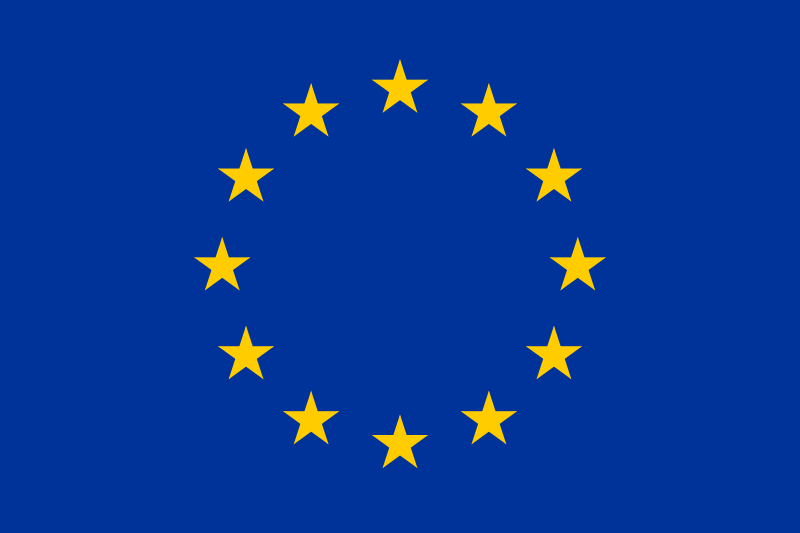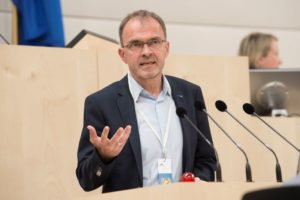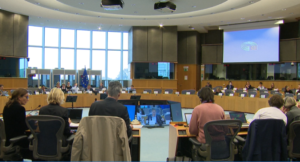Nearly Zero-Energy Buildings: “Smart integration of home automation with heating technology”
June 13, 2014
According to the regulation on the overall energy efficiency of buildings, the European Energy Performance of Buildings Directive (2010/31/EU) passed on 19 May 2010, EU Member States must ensure that all new builds are nearly zero-energy houses from 2021 on – in the public sector, the directive will even apply two years earlier. With its energy-plus house designs, Bosch Thermotechnik has already been offering such solutions which not only meet but go below the future building standards. Already realised energy-plus houses mostly rely on combinations of PV system and electric heat pump. Many building designs also incorporate a solar thermal system for domestic hot water. Solarthermalworld.org spoke with Ralf Köbbemann-Rengers, Vice President Engineering Solar Thermal Systems and Storage Tanks at Bosch Thermotechnik.
Photo: Bosch Thermotechnik
Solarthermalworld.org: From 2021 on, all new builds in EU Member States must be Nearly Zero-Energy Buildings, NZEBs – in the public sector, the regulation will already apply two years earlier. What has Bosch Thermotechnik done so far to prepare itself for the increased demand in the new-build segment?
Köbbemann-Rengers: It has been Bosch Thermotechnik’s expectation for years that the future building standard would want to bring down energy demand to the lowest possible level. Considering our product range of heat generators, we will be well prepared for the task ahead. With the Buderus systems for energy-plus houses, we even took a step further by developing technology kits that result in an energy surplus. These kits consist of a PV system, a ventilation system, one or two heat generators – for example, heat pump, solid fuel boiler or gas condensing boiler and stove – and SmartHome controls. Several newly built energy-plus houses have proven that this design can be implemented using technology that is available today. The essential component is the PV system, which supplies the electricity to run energy-efficient household appliances and, for instance, the electric heat pump that heats the rooms and the domestic hot water. We have recently included batteries into our product range, so that homeowners can use the electricity produced by the PV system at any time of the day.
Solarthermalworld.org: In your opinion, which role will solar thermal technology play in NZEBs?
Köbbemann-Rengers: Depending on the selected system configuration, solar thermal systems will be an important component of nearly zero-energy buildings. In today’s NZEBs, solar thermal technology is mainly used to heat domestic hot water. It provides a fairly easy solution to heat almost all of the domestic hot water during the summer months and avoid the additional use of conventional backup sources to reach the desired temperature. In the future, we will focus on enhancing thermal storage and system solutions, in order to further optimise the share of solar thermal in building heat supply.
Through the SmartHome concept, which Buderus implemented together with RWE, we have been able to achieve a smart integration of home automation with heating technology. The Buderus Heating app by RWE SmartHome lets you now control all components of web-capable Buderus heating systems through a smartphone or tablet: from the central heating system down to each individual radiator in the house.
Solarthermalworld.org: How great has the demand for these heating solutions been so far?
Köbbemann-Rengers: The interest in efficient heating systems is increasing steadily – not only for nearly zero-energy buildings. When it comes to new builds, demand continues to grow due to the legal requirements that have to be met. But owners of existing buildings are also investing in energy-efficient solutions to reduce operating costs. Regarding architectural design, these solutions open up all kinds of possibilities – buildings meeting the energy-plus house standard can have the same kind of individual design that other new builds have.
Solarthermalworld.org: The directive will apply all across Europe. Which technologies do you think will be used to implement the directive in southern, central and northern Europe? Will these European regions have different heating design solutions for nearly zero-energy buildings?
Köbbemann-Rengers: Essentially, our technological solutions are used all across Europe. But there will be individual designs in specific countries, particularly against the backdrop of different heat demand profiles. As a system provider with a total of 14 R&D locations all over Europe, we can identify market specifics early and can respond to them using our product range. Compared to Germany, heat demand in southern Europe will, of course, be lower. Here, the main issue will be to provide warm water while remaining efficient and using almost no CO2 for its production. Heating demand, however, will still play a role in the south of Europe during the winter months, because there is an increased demand for higher comfort levels. In the north, for example in Scandinavia, heating is unmistakably at the forefront of demand, whereas warm water is a somewhat less important issue.
More information:


